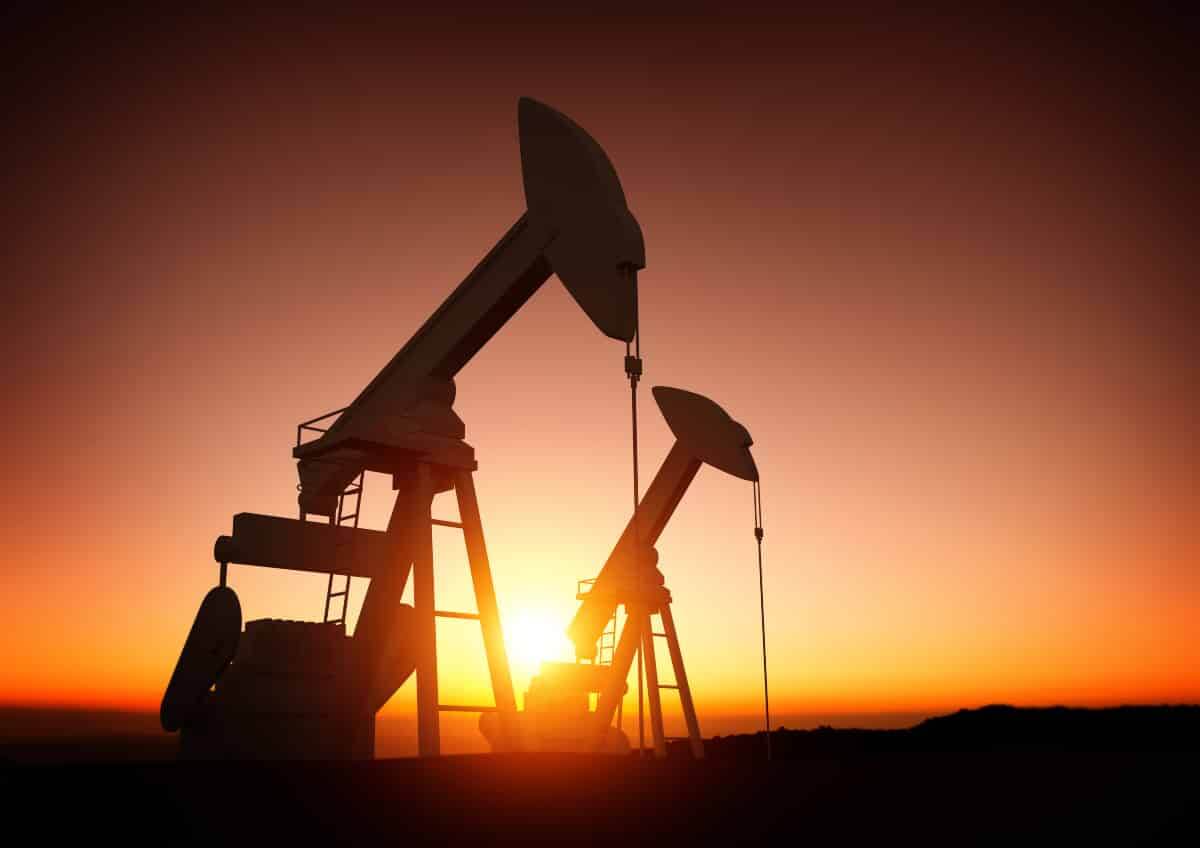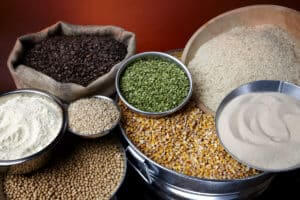
Essential commodity market assets
The commodity market is at the beating heart of the trading world. It ensures that companies all around the world can get the necessary resources they need to function properly.
Whether this is by selling these resources directly or transforming them into new products, the role of the commodity market in all of this cannot be understated.
You may as well say that all the financial markets we have today developed from the foundations of commodity trading. If we want to discuss the commodity market, we must discuss those resources which are of the highest importance to it.
They come in several categories. For one, we have agricultural products (including meat, livestock, dairy etc.). We then have metals, which can be of use for various purposes. Finally, we come to energy products, which, again, have a variety of uses.

Agricultural products in the commodity market
These are the most essential commodity products, as they ensure that populations all around the world are fed. We specifically included any raw products that are produced in traditional agricultural sectors, in this list.
The first of these could be meat, such important products such as beef, chicken, pork, and a whole range of fish. Various parts of an animal’s meat can have several uses. For example, fat has, at various times, been used for soap and candles.
People can also sell livestock directly, with which they can derive several different products. This could be meat itself, milk, eggs, (dairy products in general), breeding more livestock, and by-products, like wool.
We then have what is probably the largest sector, grains. This includes wheat, rice, and corn. Farmers find these kinds of products useful not only for selling but also for the upkeep of the products they already own (e.g. feeding livestocks).
Oilseeds are also of importance both for their oils and their by-products. This may include cotton, palm oil, and various others.

We then more secondary class products, including all sorts of varieties of fruits and vegetables.
We could also include products like coffee, sugar, and cocoa with these.
Finally, we have the non-consumable products that usually arrive from agricultural sectors. This includes wood, rubber, and the wool we mentioned earlier.
Volatility
The agricultural sector, more than any other commodity sector, suffers from volatility. This is because of the effects the environment has on the production of agricultural products.
The time of year, the location (type of soil), and the particular weather conditions are all relevant. The seasons mean that the price of products vary considerably depending on whether a product is accessible, and how large the reserves would be.
The weather is not always predictable, so some regions and products may suffer more, for reasons out of their control.
Metals in the commodity market
Metals have all sorts of different uses, which vary depending on their specific properties, and their availability.
Base metals
Metals that are more abundant and more likely to be of use for larger constructions. Since they are more available, they are easier to access, and therefore, cheaper.
This use could be as, say, a car skeleton, or the frames of a large building. These would be what we call base metals. People in heavy industry are their main buyers.
Copper is one. Its high electrical conductivity means it is highly useful for electronic equipment (they are present in the vast majority of wires). It also has rather high heat conductivity, making it useful for industrial heat exchangers. Steel is another essential metal.
In reality, steel is a mixture of iron and carbon. This alloy product finds a lot of use for the types of constructions we talked about earlier (cars and buildings). Aluminium is an essential metal, being both strong and lightweight.
These two combined characteristics mean it is highly useful for, say, building a durable computer. There are plenty more of these metals (lead, tin, zinc, etc.), but we cannot discuss them all here.

Precious metals
Due to their relative rarity, precious metals do tend to have a higher asking price. What’s more, many of them have great visual appeal.
These two factors mean that using precious metals as, say, jewellery, is quite a popular tradition. This is because they are great status symbols for people to wear.
Furthermore, in the past, many of these metals went on to become so commonly used that they became the basis for the first form of currency.
The attractive aspects of these metals do extend beyond their rarity and some do have practical uses, depending on their specific characteristics. Gold, for example, is often a safe-haven asset and would have had uses in jewellery and as a currency.
People can also use gold as a fantastic electric conductor, and as a filling for teeth (this is because it is chemically very unreactive and not poisonous).
Silver also has similar superficial uses, with its own practical aspects, though not nearly as precious.
What makes precious metals so important?
Precious metals like gold, silver, and others have held significant importance throughout human history for various reasons, and their value extends far beyond mere ornamentation.
Here are some key aspects that underline their importance:
Economic value: Precious metals have been used as a medium of exchange for centuries. Gold, in particular, has a long history as a form of currency and is still recognized globally for its value.
It is often used as a hedge against inflation and currency devaluation. When currencies weaken, the value of gold tends to increase, making it a stable investment during economic downturns.
Industrial uses: Apart from their decorative and monetary uses, precious metals have numerous industrial applications.
Silver, for example, has the highest electrical conductivity of any element and the highest thermal conductivity of any metal, making it invaluable in electronics.
Gold’s high malleability, ductility, resistance to corrosion, and excellent electrical conductivity make it crucial in high-tech gadgets, medical devices, and aerospace applications.
Cultural and symbolic significance: Precious metals have held cultural and symbolic significance across various societies. Gold, often associated with divinity and immortality, has been used in religious artifacts and as a status symbol.
Investment and wealth preservation
Gold and silver are popular choices for investors looking to diversify their portfolios. Gold is particularly renowned for its ability to retain value over time, making it a preferred choice for wealth preservation.
Precious metals can also be a safe haven in times of geopolitical instability or financial uncertainty.
Medical applications: Some precious metals have found applications in medicine.
For example, silver has antibacterial properties and is used in dressings to treat wounds. Gold nanoparticles are researched for use in cancer treatment, and gold compounds are used in some medications.
Environmental and scientific research: Precious metals play a role in environmental protection and scientific research. For instance, platinum and palladium are used in catalytic converters to reduce harmful emissions from vehicles.
Monetary reserves: Many countries maintain large reserves of gold as part of their monetary policy. These reserves act as a guarantee to redeem promises to pay depositors, note holders (e.g., paper money), or trading peers.
The importance of precious metals is multifaceted, spanning economic, industrial, cultural, and scientific domains. Their unique properties, historical significance, and enduring value make them indispensable in a wide range of applications.
Their role in modern society continues to evolve, especially with advancements in technology and the increasing focus on sustainable and ethical sourcing.
London Bullion Market
The London Bullion Market is a pivotal component of the global gold and silver markets, known for its standard-setting practices and high level of influence. This market, primarily over-the-counter (OTC), is where the world’s biggest players in gold and silver trading, including central banks, miners, refiners, fabricators, and large-scale investors, come together. Its operations significantly impact the pricing, trading, and storage of precious metals, particularly gold and silver.
Market participants and structure: The London Bullion Market consists of various participants, including the Bank of England, bullion banks, gold refiners, and trading firms.
The market operates on an OTC basis, meaning that trades are made directly between two parties without the formal structure of an exchange. This allows for greater flexibility and confidentiality in transactions.
The LBMA: The London Bullion Market Association (LBMA) plays a crucial role in the market. It sets and upholds the standards for bullion trading, particularly concerning the quality and purity of the metals traded. The LBMA also maintains the Good Delivery List, which is a standard for the quality of gold and silver bars. Bars that meet these stringent criteria are accepted for settlement in the London market.
Pricing and trading: The London Bullion Market is known for the London Gold Fixing and the London Silver Fixing, historical terms for the processes that set benchmark prices for gold and silver. These benchmarks are used globally by producers, consumers, investors, and central banks to price contracts and evaluate assets.
Storage and security: London also houses extensive facilities for the secure storage of bullion. The vaults in London, including those operated by the Bank of England, are among the most secure in the world, and they play a vital role in the global gold market.
Regulation and transparency
Over the years, the market has seen increased regulation and calls for transparency. The LBMA has been at the forefront of efforts to increase the accountability and sustainability of the gold and silver markets, introducing measures like the Responsible Gold Guidance.
Global influence: The London Bullion Market’s influence extends beyond the UK. It’s closely connected with other major markets in New York, Zurich, and Asia, affecting global prices and trends in gold and silver trading.
Energy assets in the commodity market
The final groups of assets we can discuss are the energy assets. These are all the assets that are essential to running the modern world as it currently is.
Without them, we would not have electricity, automatic vehicles, modern indoor heating, and other countless uses. They are essential to the way of living and economies of all countries today.
Unfortunately, many of these resources are also finite, yet we are using them at an extraordinarily fast rate. This is why people are desperately searching for useful energy alternatives we could use for the foreseeable future.
The most important of these resources is crude oil. Crude oil is not much use in its raw form. However, once factories refine it, they get many useful products. Take gasoline, for example. It is essential for almost all automobile transport, similar to diesel.
Heating oil is essential for keeping many people’s houses warm. Due to its many uses, crude oil is essential to the economy. In fact, many countries owe almost all their wealth to oil (e.g. UAE).
Another essential energy source is coal. Coal is one of the main sources of power for producing electricity worldwide.
It does not have a monopoly, however, as all that is needed for producing electricity is a source of energy. This can be done in numerable ways and is the area of focus for most renewable energy methods.
-
Support
-
Platform
-
Spread
-
Trading Instrument




